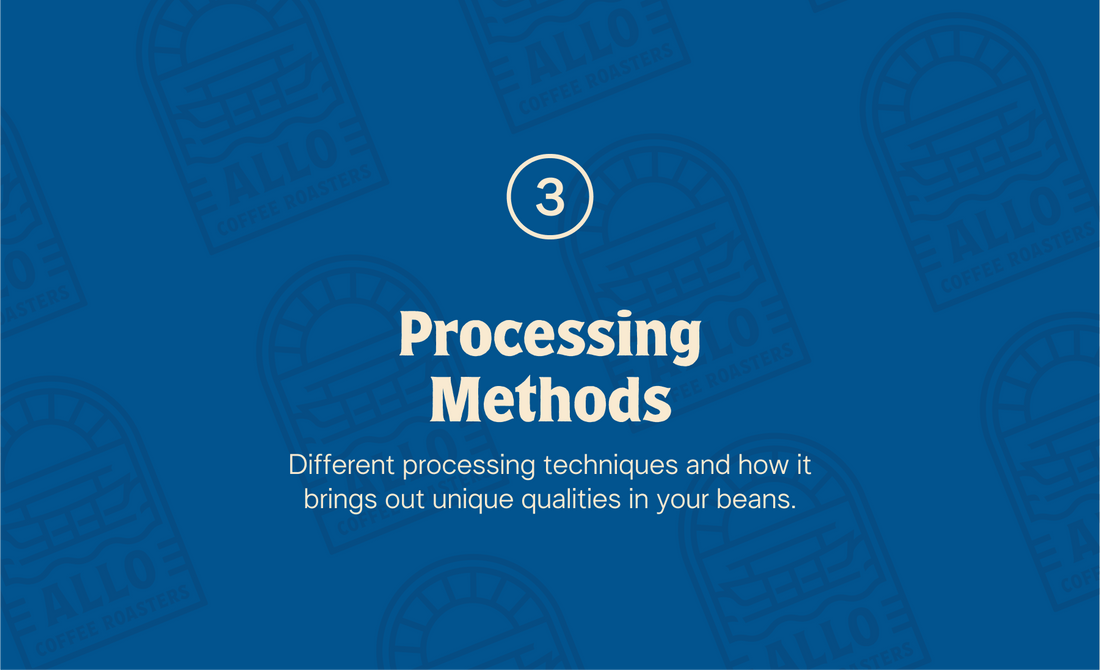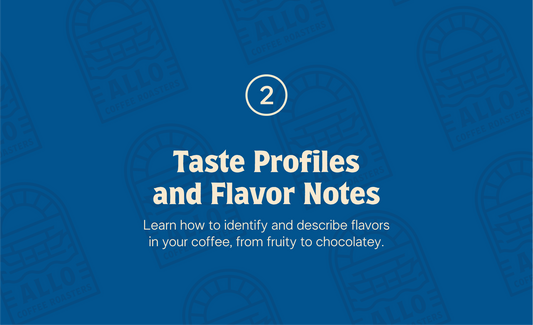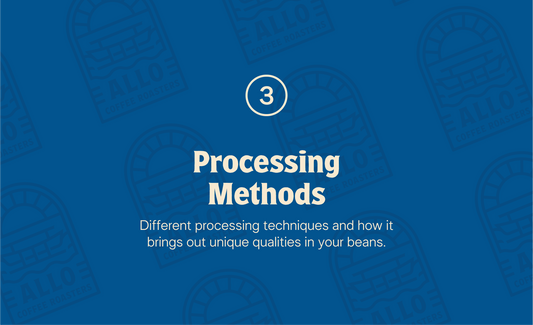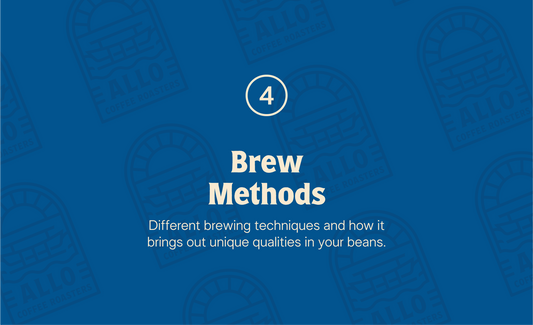Processing Methods already? Children these days grow so fast. First, we talked about how regions and their locations and techniques help shape unique characteristics in them. How we like to mix and match beans into blends to get more nuanced and balanced flavors. Then, we talked about how to describe those specific flavors, categorizing them in ways that'll help you tell them apart. Processing Methods do change the taste of the beans, sometimes drastically. Along with origin and roast level, how coffee is processed after harvesting plays a huge role in shaping its taste profile.
Processing Methods
When we talk about a coffee’s taste profile, we’re referring to general categories like fruity, nutty, chocolatey, floral, or earthy. These profiles are shaped by multiple factors, but one of the most significant is how the coffee cherry is processed. After the cherries are picked, the seeds (what we call beans) have to be separated from the fruit and dried. How that’s done influences the final flavor in big ways. So that brings us to step 4. Most coffee bean farmers tend to process beans in 4 ways, but since we also sell decaffeinated coffee, we added 2 more.
- Natural / Dry
- Washed
- Honey
- Experimental
- Sugar Cane Decaf
-
MC Decaffeination

Natural / Drying Process
The natural process (or dry process) leaves the entire coffee cherry intact while drying. The beans sit inside the fruit for longer, soaking up its sugars and flavors. This method produces a much sweeter, fruitier coffee (often with jammy, fermented, or wine-like notes.) The body tends to be heavier and the flavors bolder, but sometimes less predictable.

Washed / Wet Process
On the contrary, the wet process removes the outer fruit before drying. The beans are fermented and thoroughly rinsed in water to remove any remaining mucilage. This results in a clean, crisp flavor. Washed coffees often have higher acidity and let the bean’s origin and varietal characteristics shine through. They taste brighter, more delicate, and more refined.

Honey Process / Pulped Natural
First of all, they don't actually use honey here. It's just called that way because after some of the fruit is removed, a sticky layer called mucilage is left on the bean during drying. This creates a flavor profile that combines the brightness of washed coffees with the sweetness and body of naturals — balanced, smooth, and complex.

Experimental
This process is the avant-garde art version of coffee. Cutting-edge techniques that push the boundaries of how coffee can taste, usually developed by producers who want to create unique flavor profiles, differentiate their beans in the market, or simply explore what’s possible beyond the standard washed, natural, or honey processes. We'll give a brief run-through of different types, but don't worry about it!
-
Anaerobic Fermentation – Beans ferment in sealed, oxygen-free tanks, creating bold, complex flavors like tropical fruit or spiced liquor.
-
Carbonic Maceration – Whole cherries ferment in carbon dioxide, producing super fruity, candy-like coffees with bright acidity.
-
Lactic Fermentation – Uses lactic acid bacteria to give coffee a creamy body and tart sweetness — think strawberry yogurt.
-
Thermal Shock – Exposes beans to quick temperature changes to tweak sweetness, acidity, and body more precisely.
-
Koji / Enzymatic Process – Adds enzymes like koji mold to enhance sweetness and body, often giving rich, savory, or umami notes.
Decaffeination Process
How you holding up? We're almost done, just two more. If you've ever wondered how you uncaffeine caffeine in its most potent form, here's the two usual ways how.

Sugar Cane Decaf
Sugarcane decaf is short for the Sugarcane Ethyl Acetate Process, and unlike the Honey Process, this one actually involves sugarcane. The process uses a natural compound called ethyl acetate (EA), which is derived from fermented sugarcane molasses. EA is used as a solvent to gently remove caffeine from green coffee beans. The reason it’s popular is because it’s considered more “natural” compared to synthetic chemical methods, and it tends to retain a mild sweetness in the final cup.

MC Decaffeination
MC decaf refers to the use of methylene chloride, a chemical solvent, to remove caffeine. Despite its scary name, this method is FDA-approved and widely used because it's extremely good at targeting just the caffeine molecules while leaving the rest of the bean's flavor profile intact. Beans are soaked to open their pores, then rinsed with the solvent, which binds to the caffeine and pulls it out. They're then washed and dried, leaving minimal chemical residue (waaay below safety thresholds). The end result is a decaf coffee that’s very close to its original flavor, which is why it’s often favored by roasters looking to maintain the bean’s character.
It's like SpongeBob.
Think of it like SpongeBob. Plankton (the solvent) is always scheming to steal the Krabby Patty formula (aka caffeine). So what does he do? He sneaks into the Krusty Krab (your coffee bean), grabs the recipe, and escapes while leaving the restaurant intact. In decaffeination, the solvent infiltrates the beans, grabs the caffeine molecules, and then both are washed out. The bean stays behind, minus the caffeine, hopefully still tasting like its old self. We may not be fry cooks, but we sure hope we cooked with this metaphor.
In MC Decaf, Plankton is more precise and sneaky. He infiltrates the restaurant in the dead hours of the night; making no noise, leaving no trace. That’s why the flavor stays almost the same.
In Sugarcane Decaf, Plankton comes in during the day, puts on a moustache and a tropical shirt as a disguise, and he'll bring a bit of sugar with him. He still steals the recipe, but he leaves a subtle sweetness behind as a calling card to taunt Mr. Krabs.
Allo, Out! For the third time.
Wow, we sure hope this helped! If it didn't, feel free to chat us. We do our best to make specialty coffee fun, accessible, and less scary for everyone, so it matters to us if what we say or do doesn't align with our mission. If we got anything wrong, we'd also appreciate it if you reached out to us about it. So, yeah. Thanks for reading!
As you've seen, how a coffee bean is processed after it's harvested has a massive impact on the final flavor in your cup. Whether it's the clean clarity of washed coffees, the bold fruitiness of natural ones, or the experimental punch of anaerobic and enzyme-driven processes (woah), and how each method leaves its mark. It's not just about how the bean grows, but how it's handled afterward that brings out those flavor notes we talk so much about. So the next time you take a sip, try to imagine the journey it took from cherry to cup. Because maybe, just maybe, the real processing method were the friends we've made along the way.
And now, you're ready for the last lesson. Brew Methods.





